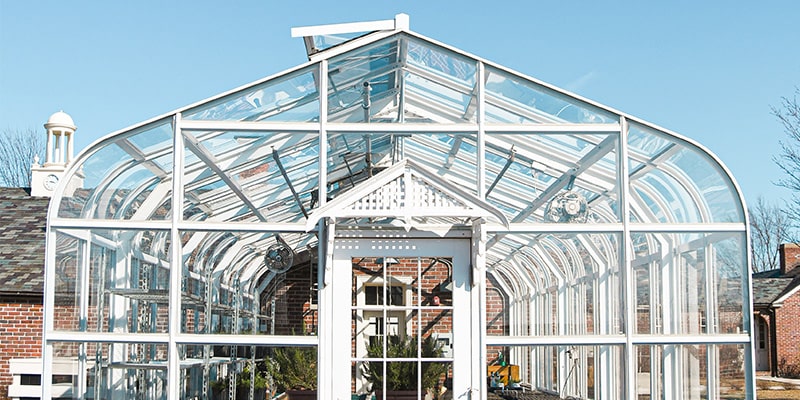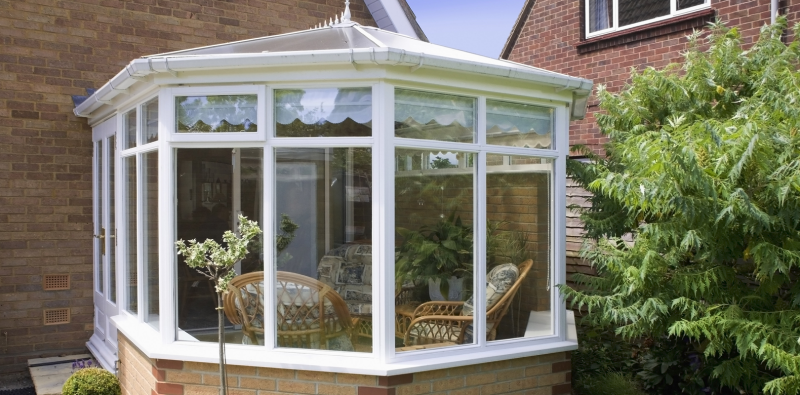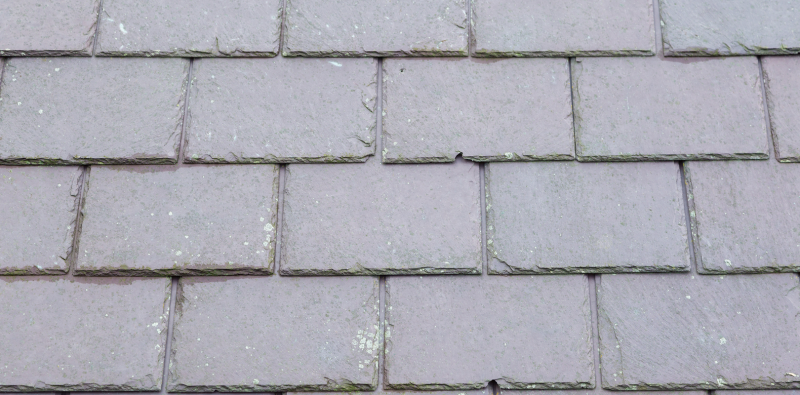Conservatory Roof Replacement: What You Need to Know

Traditional conservatories required at least 75 percent of their roof and 50 percent of their walls to be constructed from transparent glazing. This would allow homeowners to attach a conservatory onto their home without having to consider nor comply with building regulations.
Over the past few decades this has resulted in thousands of homeowners constructing glass or polycarbonate conservatories. Whilst they do not need to comply with building regulations, these conservatories tend to become incredibly hot during the summer and cold throughout the winter.
Today many homeowners are seeking a replacement for their polycarbonate conservatory roof. Roof tiles, which are often manufactured from an innovative plastic, are said to be warmer and more durable. Although a portion of homeowners are passionate advocates of traditional glass and polycarbonate, which do offer their own benefits.
Our customers are often trying to answer a simple question – ‘is a conservatory roof replacement worth it?’ With several conservatory roof replacement options on offer, however, trying to find an answer can be daunting. Not only do you have your neighbours swaying your opinion, but the growing number of conservatory replacement companies are also pleading you to trust their advice.
What Are The Benefits Of Replacing My Conservatory Roof?
- Replacing your conservatory roof is an excellent way to breathe new life into your home, and is far more cost-effective than replacing the whole conservatory.
- Thanks to the increased energy efficiency of modern materials, you could save up to £200 per year on utility bills according to an independent study by AECOM.
- As well as saving you money on energy bills, a conservatory with a modern roofing solution will add value to your home and help to entice future buyers.
Conservatory Roof Options
When considering a conservatory roof replacement, there are three options to choose from! These include a glass, polycarbonate or tiled conservatory roof. They each provide different levels of durability, insulation and security. They also have varying installation and maintenance costs.
Glass Conservatory Roof
Conservatories constructed between the 70’s and 80’s often featured glass roofs and walls, with many having brick foundations. During this period thermally efficient glass was expensive and many now experience poor insulation throughout the year.
Should you have an old glass conservatory roof, the likelihood is that you would be best suited considering either a polycarbonate or tiled alternative. Solid polycarbonate is a particularly good choice, as you will likely not need to source new glazing bars and it provides a similar appearance.
Those who would like to replace their existing glass panels with new glass ensure you consider the different variants available today. In particular you should consider double glazed panels with an argon filling, which is shown to prevent heat escaping during cooler months. This also helps to keep cold air out.
To reduce maintenance you may also benefit from considering self-cleaning glass panels. These feature an outer coating which reacts to environmental changes to break down dirt. Simply ensure you have the necessary pitch and weather conditions for the glass to effectively self-clean.
If glare is an issue during summer, you’ll find tinted glass panels too. Solid polycarbonate is also available in tinted varieties, providing you with an ideal alternative to glass whilst maintaining the same appearance.
Before committing to a glass conservatory roof replacement, it is important that you consider some of the negatives. Firstly, glass is incredibly heavy and demands an appropriate structure. Glass roof panels are also easily damaged, with severe hail likely to result in chips. The weight and brittleness of glass often prove challenging during installation too.
A glass conservatory roof will likely last in excess of 30 years with minor discolouration. Whilst this does depend upon maintenance, it is certainly a long-term solution. This is assuming you utilise high-quality glazing bars that are designed to fold glass panels, such as our aluminium glazing bars.
Polycarbonate Conservatory Roof
Throughout the ‘naughties’ polycarbonate was booming! This was due to the insulation properties it offers and it being lightweight. Whilst multiwall polycarbonate features ‘tunnels’, it provides a similar level of transparency as a glass conservatory roof. Solid polycarbonate, on the otherhand, is virtually identical.
Multiwall polycarbonate is a low-cost and well insulated sheet that combines multiple layers of plastic. Between these layers are tunnels, which hold air to prevent dramatic changes in temperature.
Solid polycarbonate is a more premium solution. Whilst its insulating properties are not as significant, it offers superb strength with it being up to 200 times stronger than glass. This makes solid polycarbonate virtually unbreakable.
Both multiwall and solid polycarbonate are ideal for any conservatory. This is due to them using widely available glazing bars, including both aluminium and PVC options. The sheets themselves are also lightweight and do not require any extensive support beyond high quality timber battens.
Whilst a polycarbonate conservatory roof offers better insulation than glass, many still struggle with fluctuating temperatures throughout the year. In many cases this is due to gaps remaining following installation or poor maintenance, but polycarbonate will rarely provide greater insulation than a tiled conservatory roof.
A polycarbonate conservatory roof will typically provide a life span of 10 years. Due to some polycarbonate sheets featuring UV protection, they will not typically discolour over time. To maximise the longevity of your polycarbonate conservatory roof, utilise high quality PVC glazing bars or aluminium glazing bars.
Tiled Conservatory Roof
Those looking to minimise heat loss through their conservatory may want to consider a tiled conservatory roof. Not only do tiles provide greater insulation but they also allow you to achieve a gorgeous finish when completing a conservatory roof replacement.

Whilst roof tiles are typically thinner than both glass and polycarbonate, the overall build-up of a tiled conservatory roof provides superb insulation. With glazing bars not being required, there is also less chance of drafts and cold air seeping through small gaps.
Traditional concrete and slate roof tiles provide brilliant insulation, although demand greater structural support. Plastic or metal tiles provide similar insulating capabilities whilst being considerably more lightweight at approximately 15kg per square meter.
When choosing conservatory roof tiles you have a choice of profiles. You can also choose from individual tiles or panels, with the latter being easier to fit by homeowners and tradesman. Tiles are also wonderfully easy to fit onto a lean-to conservatory, with a traditional Edwardian or Victorian conservatory requiring a few additional flashings.
The only negative aspect of roof tiles is the cost and weight. When using a synthetic plastic roof tile you can expect it to cost approximately £50 per square meter. It will also weigh approximately 15kg per square meter, dependent upon the structure. Whilst this is typically cheaper and lighter than glass, it is considerably more than a polycarbonate conservatory roof.
A tiled conservatory roof will typically last in excess of 50 years with little maintenance being required. Britmet and other manufacturers also offer up to 40 years guarantee on their roof tiles, providing you with confidence in your conservatory roof replacement.
Will I Need Planning Permission for my Polycarbonate Conservatory Roof Replacement?
Thankfully, the UK government changed the rules around planning permission for conservatories in 2010. It may however be necessary for you to obtain building regulation approval from either your local authority or a private Building Control Body. Following the changes in regulation, planning permission is now only required when changes to your home may affect the wider environment or your neighbours. On the other hand, building regulations are concerned with structural integrity and the safety of a building’s inhabitants.
Where planning permission may be required for your conservatory however, is if you add a solid roof. Adding a solid roof makes your conservatory a permanent, rather than temporary structure. This could fall under “change of use” and therefore require planning permission. It’s best to seek advice from your local authority before undertaking any work. It’s best not to cut corners. Even if you slip under the radar now, if you later come to sell your home, an unapproved structure such as a conservatory could make things difficult.
Choosing Your Materials
When replacing your existing conservatory roof, it is essential that you research the various materials available to you. With over 15,000 individual products available, Roofing Megastore have almost every option available to you. This includes polycarbonate sheets and roof tiles that are ideal for conservatory roofs.
Should you choose polycarbonate roofing sheets, simply ensure you choose compatible glazing bars. These should be able to withstand the weight of the sheets and any environmental debris that may form, such as snow. We offer PVC and aluminium glazing bars, which include an incredibly strong self-supporting system.
When choosing to use roof tiles, consult a qualified tradesman to ensure your conservatory provides an adequate level of structural support. Unlike glass and polycarbonate, you will also need to consider building regulations when using tiles on your conservatory roof.
If you have further questions about conservatory roofing materials, speak to our team by telephone or online. With over 40 years of experience in roofing, we’ll help you pick the perfect material for your project and will ensure that you have the necessary accessories.
Choosing Your Fitter
Once you’ve decided which material you would like to use, spend some time becoming familiar with the relevant trade bodies governing that sector. Then ensure that the tradesman or company you choose is a member of the appropriate bodies, assuming those bodies have strict requirements in order to become a member.
Glazers are often members of The Glass & Glazing Federation or Double Glazing & Conservatory Onbudsman Scheme. There are also several schemes which access the capabilities of tradesman, such as CERTASS. If using roof tiles, you will want to consider organisations such as the NFRC instead.
We also recommend reviewing the online reviews of that particular organisation or tradesman where possible. These often provide a candid view of their quality of work and overall competence. You can also ask that the tradesman allows you to view previous projects, particular those involving a conservatory roof replacement.
Ready to Replace Your Conservatory Roof?
With an overview of the various options available to you, where to find the best prices materials, and how to choose a fitter; you can begin planning your conservatory roof replacement. As with any large project, it is essential that you consider every aspect of the construction. You should also contact your local authorities to understand which regulations you must comply too.
If you have more questions about choose your conservatory roof materials, speak to Roofing Megastore by telephone or online. Whether you’re a DIYer or are looking to use the services of a tradesman, we can help you make mega savings on your upcoming project.